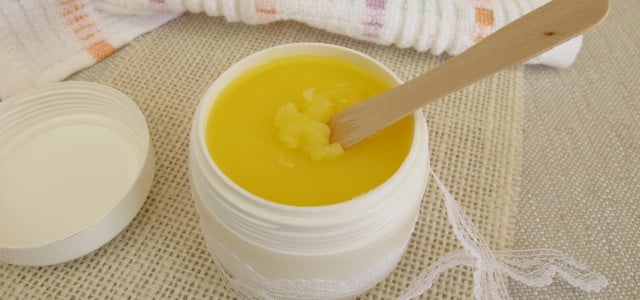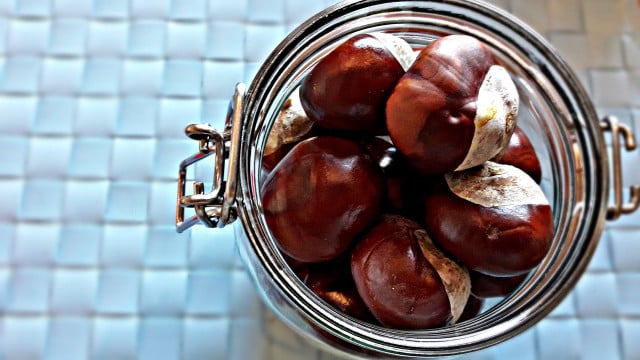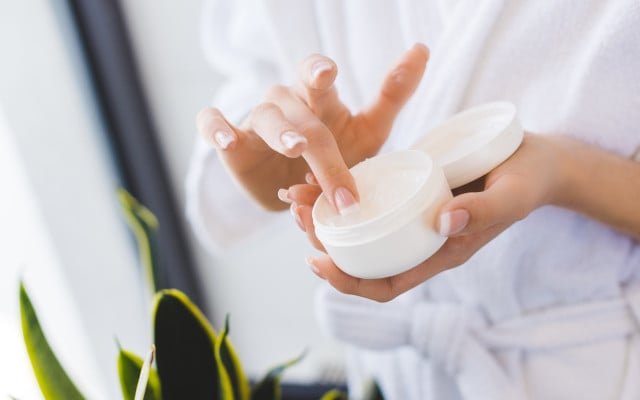
Horse chestnut ointment helps against venous disorders and swollen legs. We’ll show you how to make the ointment yourself and how to use it.
Autumn is chestnut season! The pretty seeds of the horse chestnut tree are a popular fun to collect, especially for children. But horse chestnuts are not just suitable as decoration in the house: they can also be used as a home remedy for various ailments – best in the form of horse chestnut ointment.
Horse chestnut ointment: effective against venous diseases
Horse chestnuts contain a number of valuable ingredients that are of medicinal use. According to the Apotheken-Umschau, their effect has proven particularly effective for complaints caused by venous disorders. These include:
- Pain in the legs
- heavy legs
- Calf cramps
- Varicose veins
- Swelling
- itching
The saponins contained in the seeds in particular have a vascular sealing, anti-inflammatory and vein-strengthening effect. They also have a dehydrating effect. This tightens veins, stimulates blood circulation and reduces swelling. These properties form the basis for the soothing effect of horse chestnut ointment.
However, the Apotheken-Umschau points out that horse chestnut ointment should only be used as a supportive measure for venous disorders and not as the only means of treatment. If you have problems such as those mentioned above, you should always seek medical advice.
The basis for your ointment: horse chestnut tincture

(Photo: “CC0 Public Domain / Pixabay / kasiaczernik)
You can easily make your own horse chestnut ointment for sore legs. The basis of the homemade healing ointment is a horse chestnut tincture. Depending on how patient you are, you can buy this ready-made from the pharmacy or make it yourself.
To make the horse chestnut tincture, cut a good handful of fresh horse chestnuts into pieces and peel them. Put the pieces in a glass and fill it with high-proof grain so that the chestnuts are well covered with liquid. After letting it steep for two to three weeks, you can strain the finished horse chestnut tincture through a filter.
By the way: You can also make your own detergent from horse chestnuts.
Make your own horse chestnut ointment: Here’s how

(Photo: Colourbox.de / #246329)
For homemade horse chestnut ointment you need:
- 30 ml organic olive oil or organic safflower oil from the health food store
- 4 grams of organic beeswax
- 15 grams of lanolin from the pharmacy
- 35 ml horse chestnut tincture
- a few drops of essential oil (spruce needle or juniper berry oil are suitable here)
The essential oil is used to stimulate blood circulation, but you can leave it out if you wish. Also have two heat-resistant containers ready for a water bath and a clean cream container.
Let’s go:
- Mix the oil, beeswax and lanolin together in a container and heat it in a water bath until all the solid components have melted. The mixture should not exceed a temperature of 60 degrees.
- At the same time, heat your tincture in the second container to 60 degrees.
- Then pour the tincture into the oil-wax mixture while stirring constantly.
- Remove the pot from the heat and continue stirring until the cream slowly cools down.
- Once your cream has cooled down to hand temperature, add a few drops of essential oil and keep stirring.
- Pour the finished cream into your cream jar and let it cool down for a while.
Here’s how you can make your own lip balm:
Storage and use of the ointment
Once the cream has been bottled, it is advisable to stick a label with the bottling date on the jar. You should store the ointment in the refrigerator. It should last for about six months.
Depending on the intensity of the symptoms, apply the healing ointment to your legs once or twice a day. To do this, massage it gently into the skin from the lower leg upwards to the thighs.
In principle, the ointment should also be safe to use during pregnancy and breastfeeding, as well as on children. However, it is still advisable to seek medical advice beforehand. You should also see a doctor if you notice the first signs of an allergic reaction – for example, itching.
Read more on Techzle\.com:
- Make your own skin cream from natural ingredients – here’s how
- Make your own detergent – from chestnuts
- The worst ingredients in cosmetics
Edited by Lena Kirchner
** marked with ** or orange underlined Links to sources are sometimes affiliate links: If you buy here, you are actively supporting Techzle\.com, because we then receive a small part of the sales proceeds. More information.